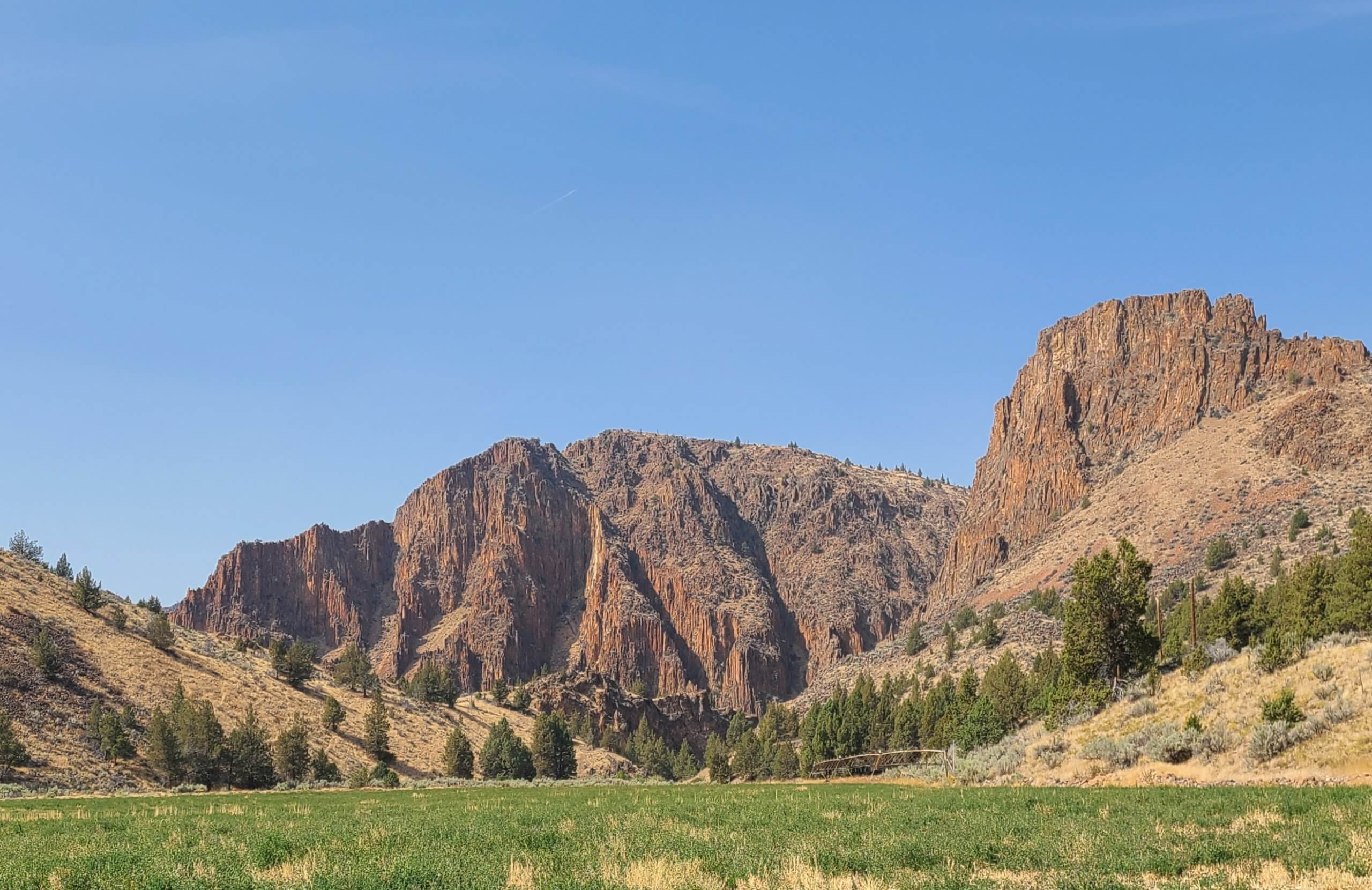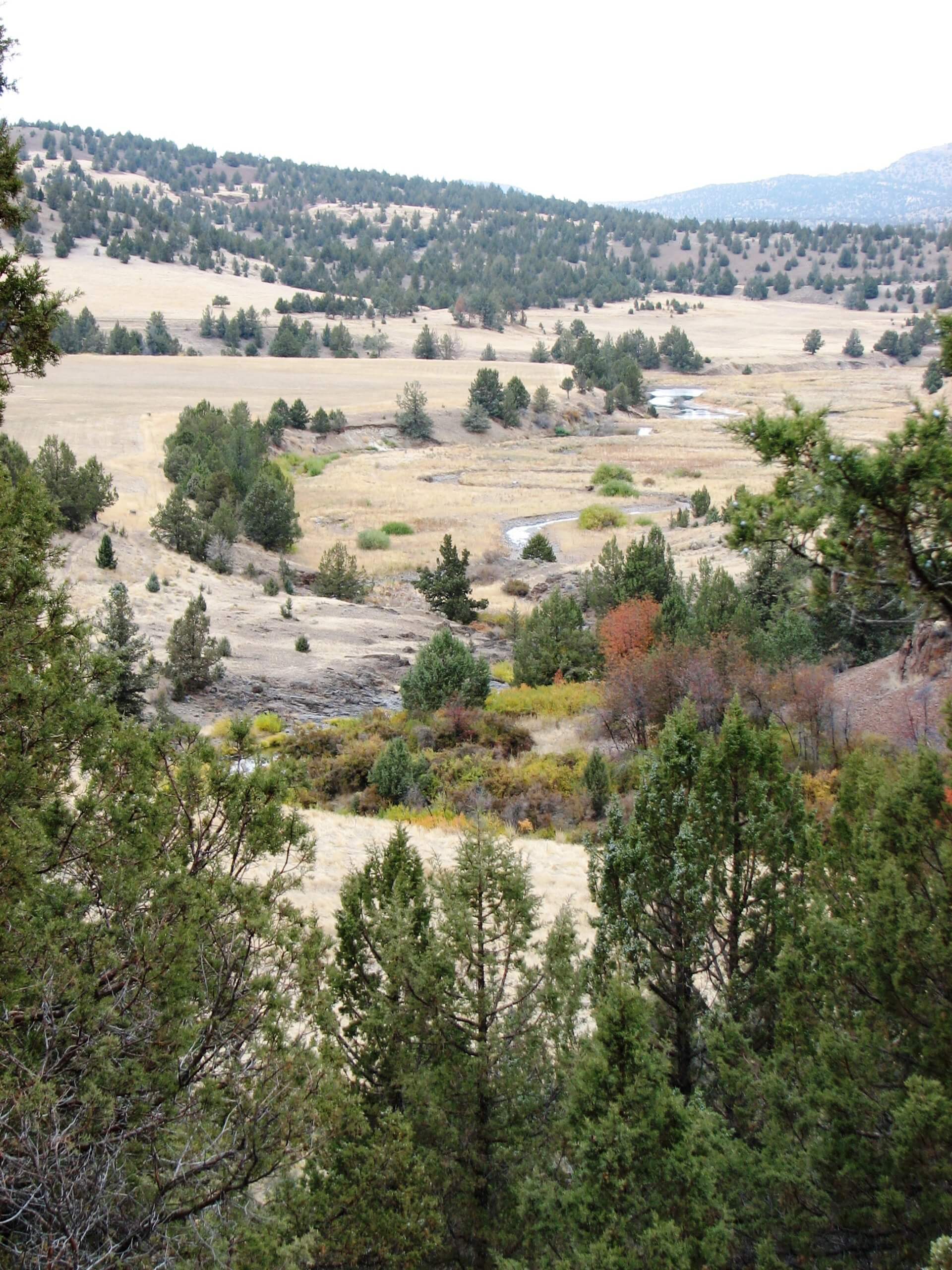
Forbearance area, Trout Creek watershed, photo credit: Deschutes River Conservancy
Improving Deschutes Instream Water Flows
The Deschutes River Conservancy (DRC) has been working for over 27 years to improve streamflow in the Deschutes River Basin. Through our collaborative work with our partners, we have been able to put more than 208 cubic feet per second (cfs) of water back into the Deschutes River and its tributaries. That’s the equivalent of the amount of water it would take to fill over 8.5 Olympic-sized swimming pools per hour. These increased flows are essential to the efforts of improving habitat for resident redband trout and for restoring steelhead and salmon runs above Lake Billy Chinook.
Trout Creek is Critical for Wild Steelhead
While much of the work the DRC has done has been focused on the upper and middle sections of the Deschutes, we recognize the interconnectivity of the river system and have been aggressively pursuing opportunities to extend our work below Lake Billy Chinook and the Pelton-Round Butte Dam Complex. To that end, we recently applied for funding through The Fly Fisher Foundation (TFF) and their 2023 conservation grant to enhance our work in the all-important Trout Creek, and we are thrilled to announce our proposal has been selected.

Upper Trout Creek Project Area, photo credit: Deschutes River ConservancyBut why Trout Creek? The answer is simple, wild steelhead. The Oregon Department of Fish & Wildlife (ODFW) estimates that 25-35% of the wild steelhead that enter the Deschutes Basin return to Trout Creek to spawn. However, this stretch of water is greatly impacted by the current hydrologic conditions of the river, meaning that it doesn’t receive the necessary water it needs to provide suitable habitat for spawning and rearing steelhead. The DRC, and now the TFF, are working to fix this problem.
Steelhead spawning extends into the upper reach of Trout Creek on almost exclusively private lands. The DRC currently has a water use forbearance agreement with a prominent landowner to keep their state-allocated water rights instream. By curtailing water withdrawals from the creek during peak summer months, the increased streamflow is giving summer-run steelhead a much better chance to complete their life cycle. However, this landowner is a working farmer and rancher, and therefore should be compensated for volunteering to curtail their water use. This is where TFF comes in. By providing funding, TFF is ensuring participating water rights holders are compensated, the DRC has the capacity to monitor and manage the project, and 2 critical cfs of water can remain instream when it’s most needed.
Building Relationships for Healthy Rivers
Beyond the water, this project plays a crucial role in continuing the efforts of building strong relationships with landowners in the basin. Through these relationships, the DRC can extend our work with landowners and partners into additional stretches of water, significantly improving conditions for migrating and spawning steelhead. We are extremely grateful to be partnering with TFF on this project and look forward to the work ahead together.
The Deschutes River Conservancy (DRC) formed 27 years ago with a mission to restore streamflow and improve water quality in the Deschutes River Basin. The DRC has a multi-stakeholder board and through collaborative efforts has restored up to 208 cfs (equivalent to 93,357 gallons per minute) of flow in the basin with non-litigious, voluntary, and market-based programs. For more information about the DRC visit www.deschutesriver.org.
Submitted by James O’Brien, Program Associate, Deschutes River Conservancy

